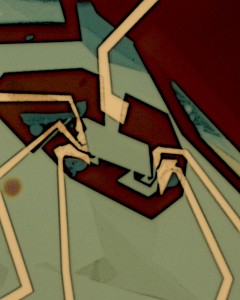Taylor Kubota of Stanford News spoke with us and worked hard and brilliantly to write a very illuminating and thorough news article and press release about our experiment that studied the miniband conduction in a graphene moire superlattice:
http://news.stanford.edu/2016/10/03/researchers-bring-theorized-mechanism-conduction-life/
Her article was featured on the Stanford Report (the official mouthpiece of the school) this week. Two major news wire services, United Press International and Xinhua News Agency, wrote their own stories based on it:
http://news.xinhuanet.com/english/2016-10/04/c_135731119.htm
and I want to especially highlight what I thought was the best write-up by an independent journalistic source that I’ve seen on the web, by Dexter Johnson on the Nanoclast blog of IEEE Spectrum:
I’m feeling a bit more hopeful about (still small) likelihood that some great engineers who have a better understanding of high frequency devices (and potential markets) can go much further with the ideas we exposed.

